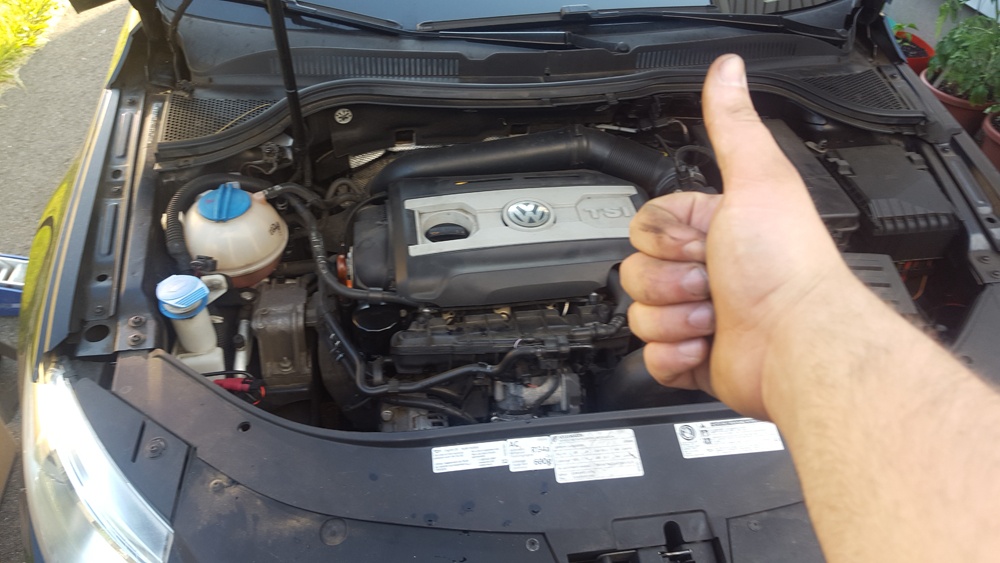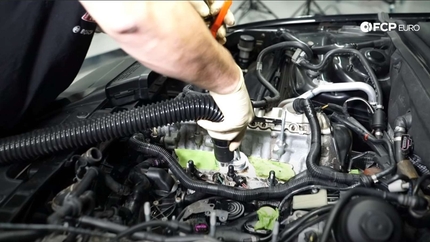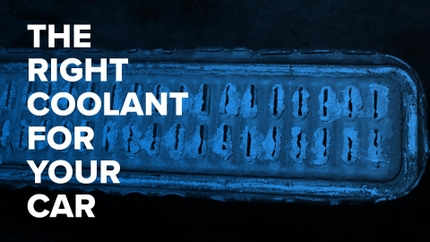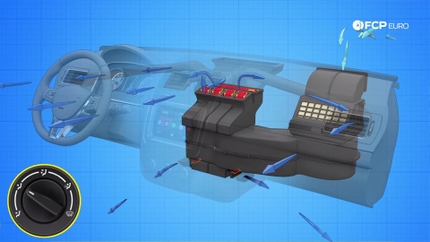I may be the BMW Catalog Manager at FCP Euro but my better half happens to own a Volkswagen. I changed the oil on this vehicle at home with basic tools and decided to share the process with you. Changing your vehicles oil on your own is not only a great way to save some money but it's also satisfying to know you did the job yourself and that it was also done correctly. Oil change procedures are pretty straight forward and for the most part are the same from vehicle to vehicle. Doing an oil change on a TSI engine is no different. On this particular DIY we're doing the oil change on a 2012 VW CC. There shouldn't be any difference in any other VW or Audi with the TSI engine.
Tools Needed:
- T45 Socket
- Ratchet
- Oil Filter Wrench (may not be required)
- Oil catch pan
- Floor jack
- Jack stands
- Cleaning supplies
I went with a Mann OE filter and Pentosin 5W40 for this oil change.
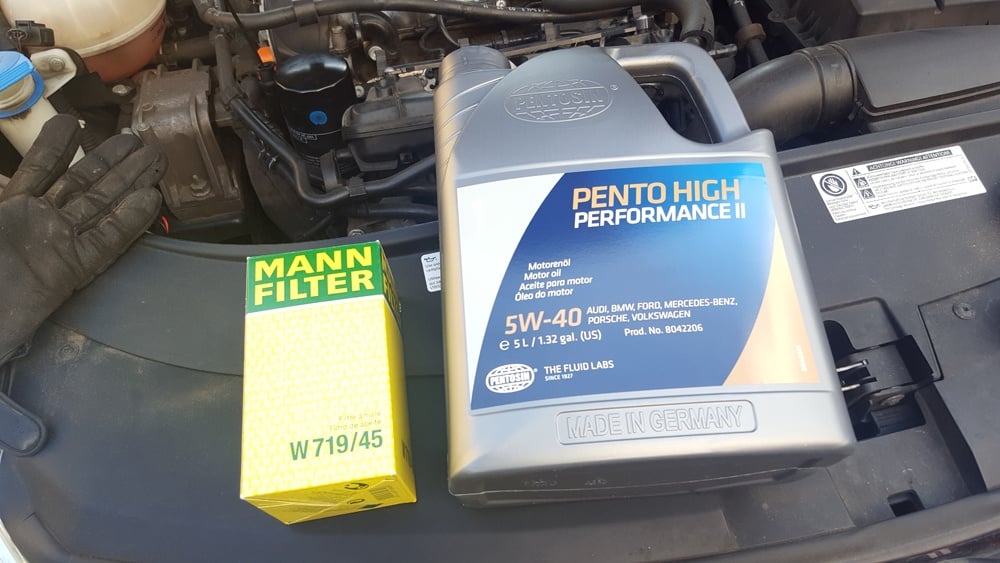
Step 1: Raise The Front Of The Vehicle
The safest way to do this is to use the pinch weld near the front tires and raise the vehicle enough so you can slide your jack stands under the vehicle. I place the jack stands underneath the control arm bushing bracket on both side. Before ever crawling under the vehicle make sure it is 100% stable. Also, make sure the rear wheels are chocked so it can't roll backwards. When jacking a car up also make sure it's on a level surface. When both sides are raised in the air it will look like this:

Step 2: Drain The Oil
First, I remove the oil filler cap and pull the dipstick up slightly. Removing the filler cap allows for the oil to drain quicker. I pull the dipstick up as a reminder to myself later on that the engine has not been filled with oil. Forgetting to put oil back in the engine has happened to many people so this is just an extra step that ensure I won't do it myself. In this step I also remove the engine cover and pull the hose that runs across the top of the intake manifold slightly out of the way. You will need this hose out of the way in order to remove the oil filter later. It should look like this:
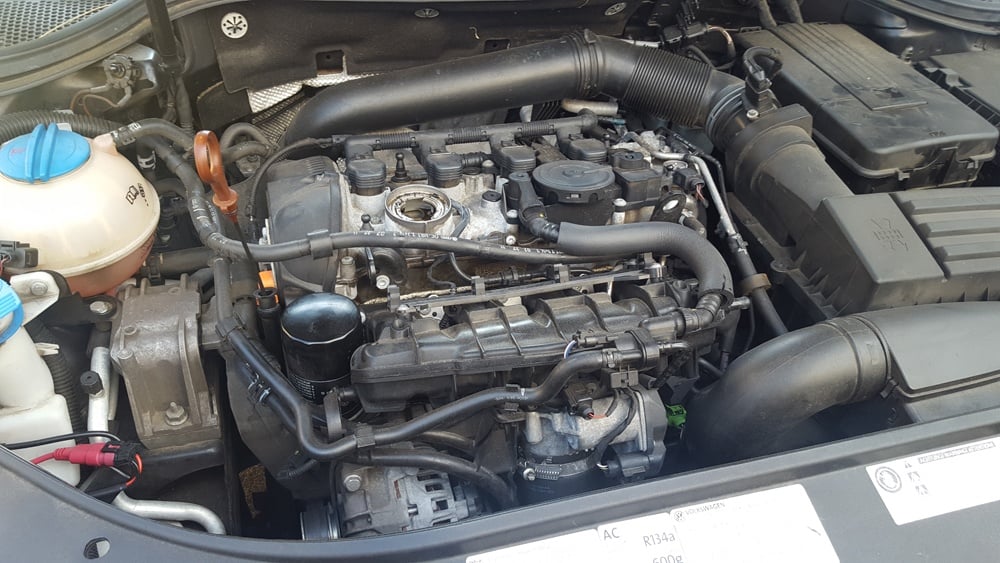
Step 3: Slide Your Drain Pan Under The Vehicle
If you have cardboard laying around place it under the drain pan. This ensure that if any oil splashed around it won't stain your garage or driveway. The next step is to remove the drain plug. The drain plug on the TSI engines requires a T45 bit. This plug should not be that tight if properly installed so don't worry if it breaks free easily. Once broken free remove the drain plug by hand and let the oil drain.

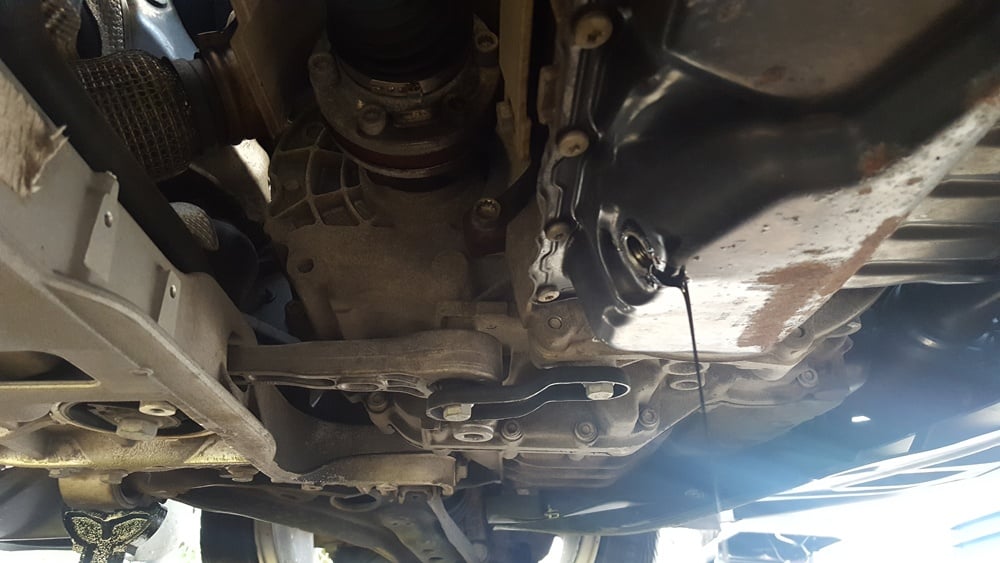
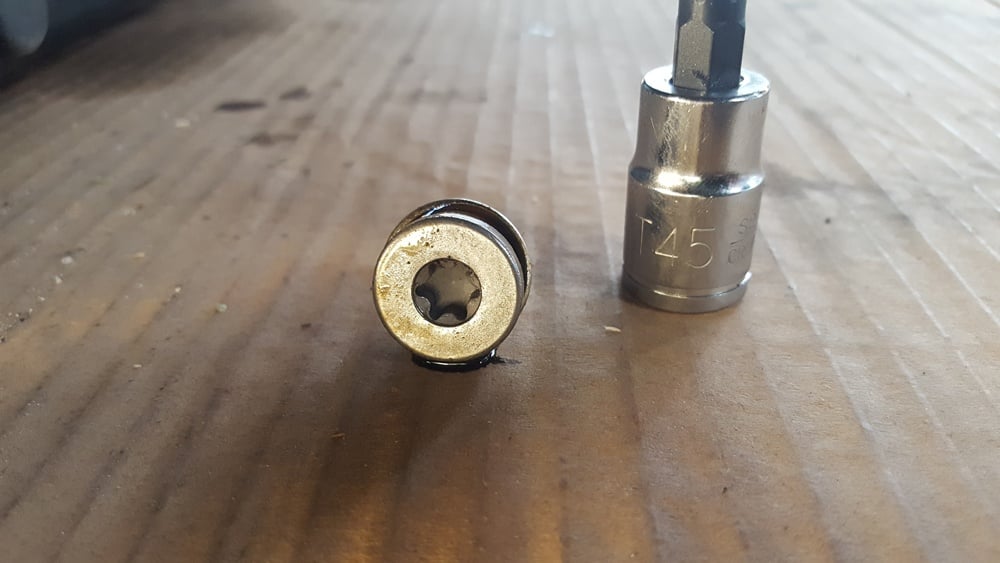
While the oil is draining remove the oil filter. The oil filter should not be installed too tightly. In fact, with enough grip you should be able to remove the filter by hand and without a tool. In case you need to remove the filter by tool either order a 74mm 14 flute socket or use a universal canister style filter tool. All you need to do is turn in a counter clockwise motion. Remember, righty tighty, lefty loosey.
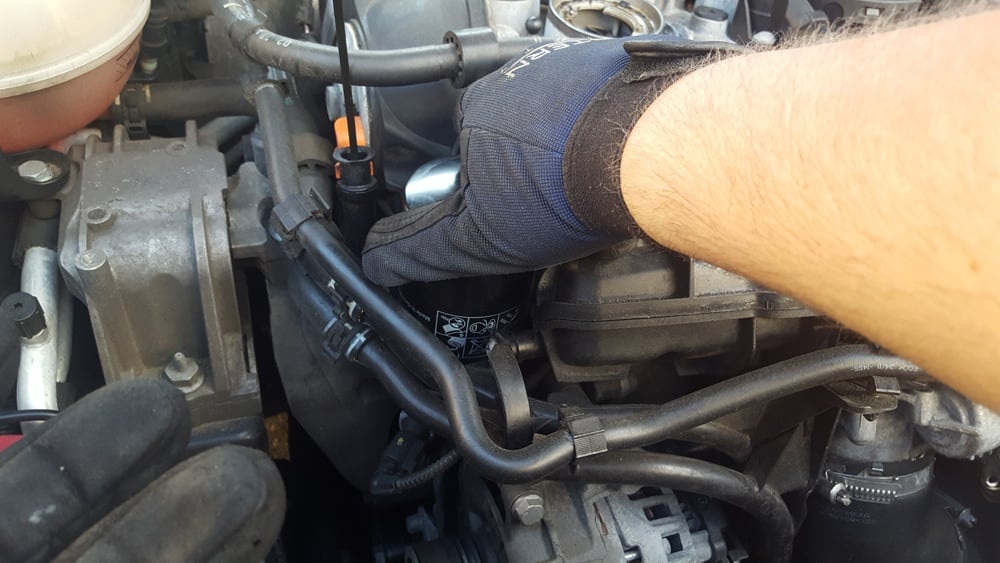
Once the filter is removed compare it to the new one you will be installed. In this case the filter removed from the car is a dealership Genuine filter which is manufactured by Mann. The replacement we're installing is a Mann branded replacement. Note that both the old filter and new filter have the same Mann part number. It's good to compare the filters to ensure they have the same dimensions and overall appear the same. There are tons of filters on the market and you do not want to accidentally install the wrong one.
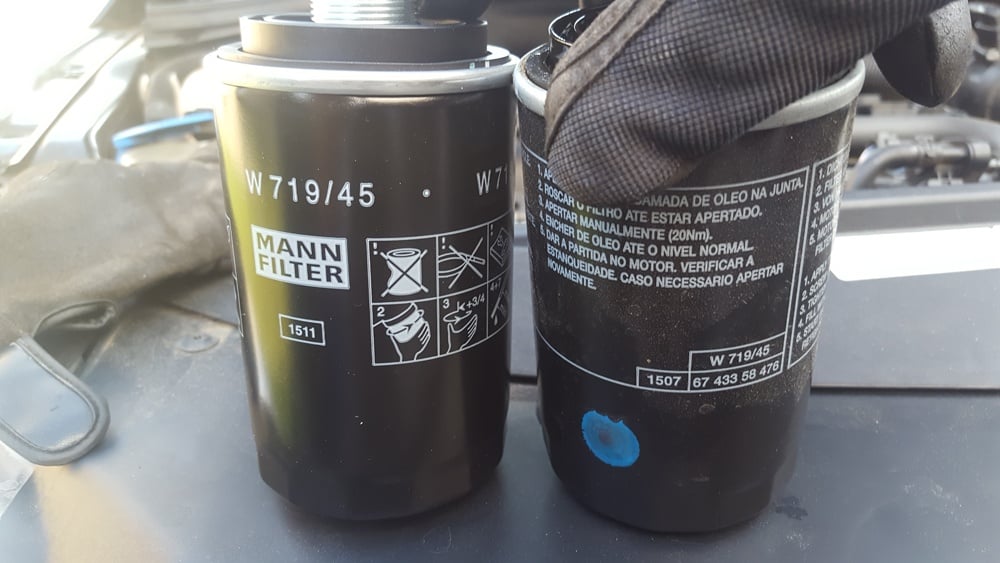
Step 4: Install The Filter
This is pretty straight forward as all you need to do is thread the new filter onto the engine. On canister style filters hand tight is all you need. The OE torque spec on these is 4-7 ft lbs of torque which is not very much. Once the filter is installed go underneath the car again and reinstall the drain plug. Similarly to the oil filter the drain plug does not need to be tightened that much. Generally speaking hand tight and a quarter turn is all that is needed.
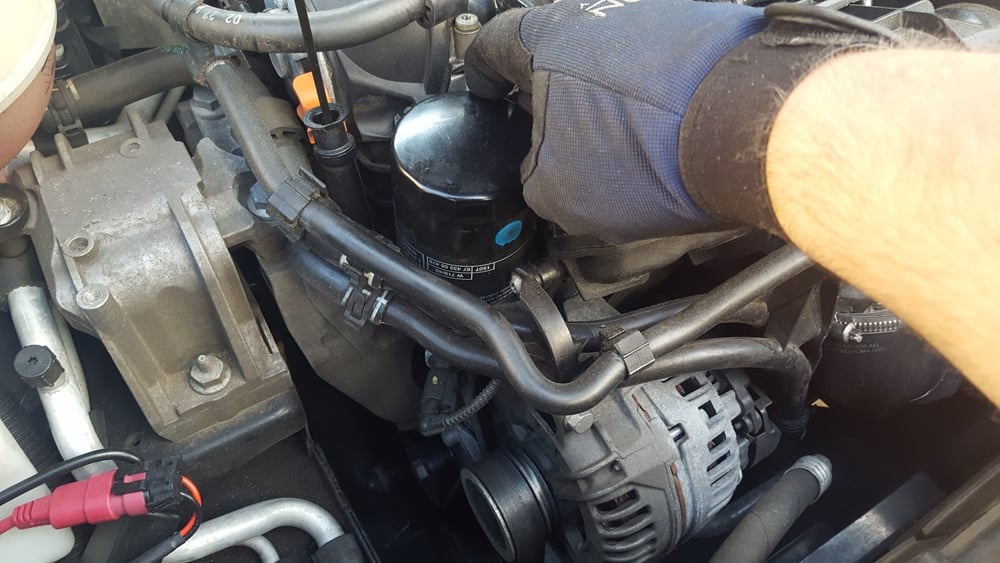
Step 5: Refill The Engine With OIl
The TSI takes 5 liters of oil and for this oil change we went with Pentosin 5W40 which also meets VW 502 00 approval. On the radiator support cover it's printed to only use 502 00 oil and I believe in using oil that is advertised to meet the manufacturer specifications. These specifications exist for a reason and I have been and always will be a proponent of sticking with the factory spec fluid. Oil change intervals are ultimately more important and I believe in doing oil changes every 5K-7K miles.
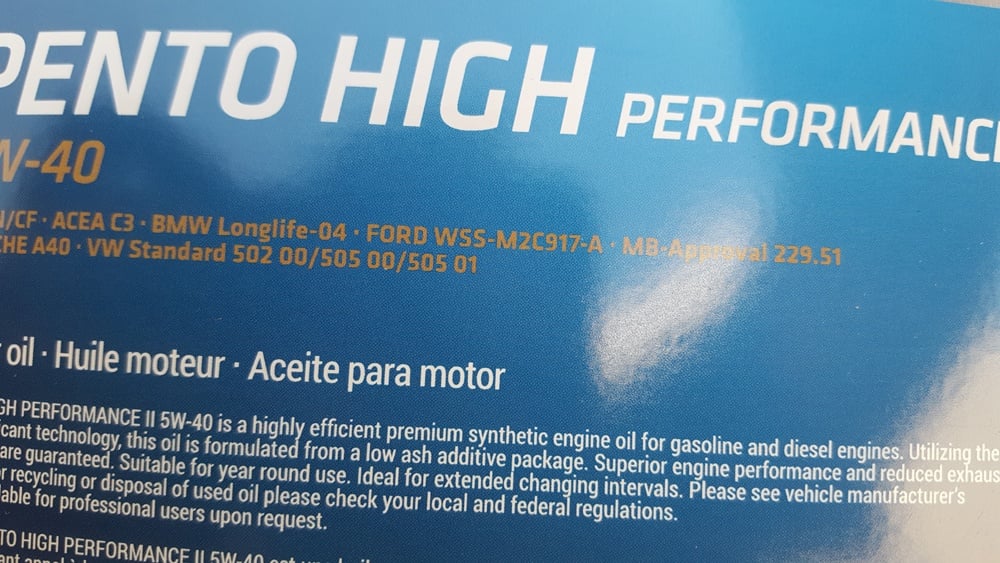
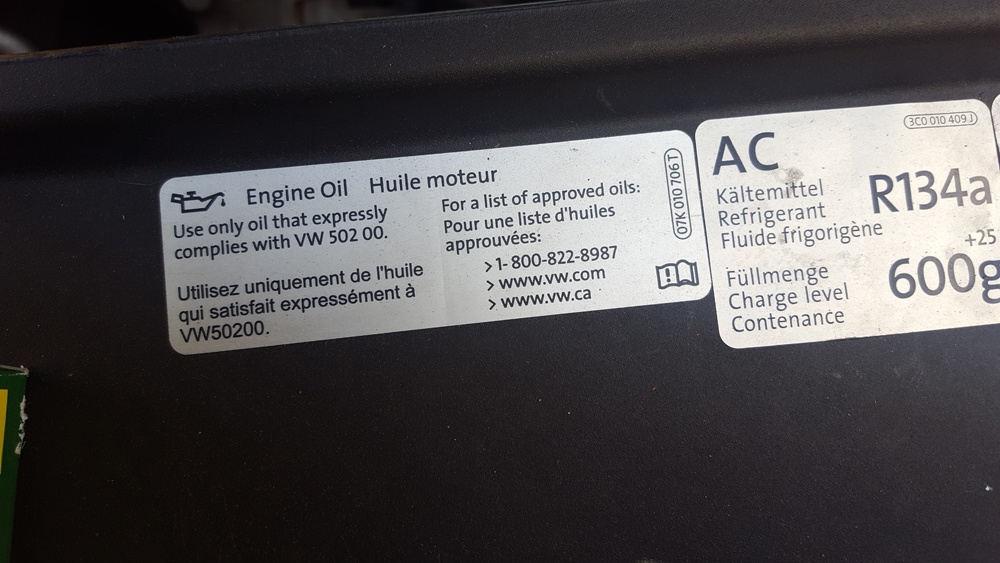
I love the Pentosin 5 liter jugs which have an integrated filler spout in the opening of the container. It's just ultra convenient and it allows for clean pours.
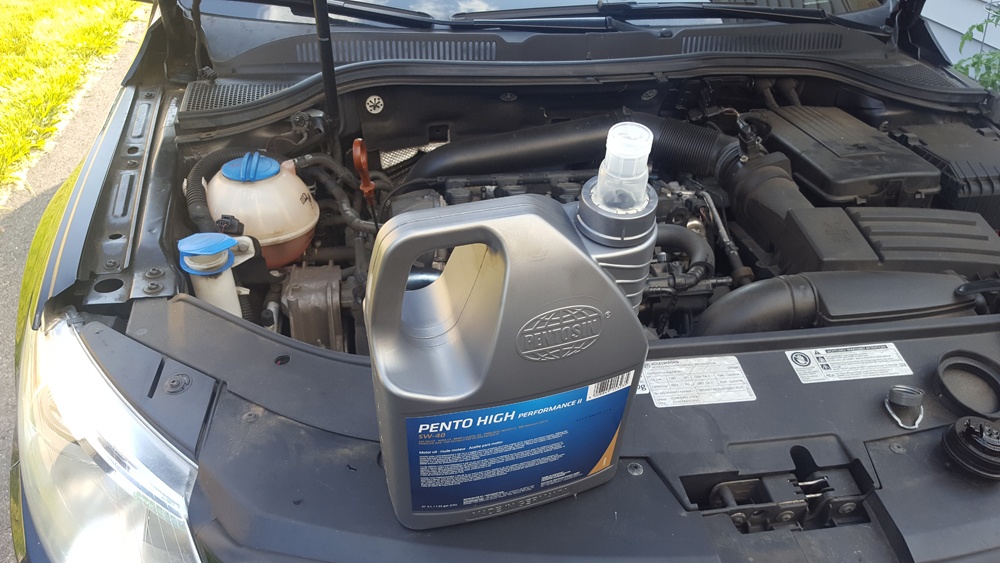
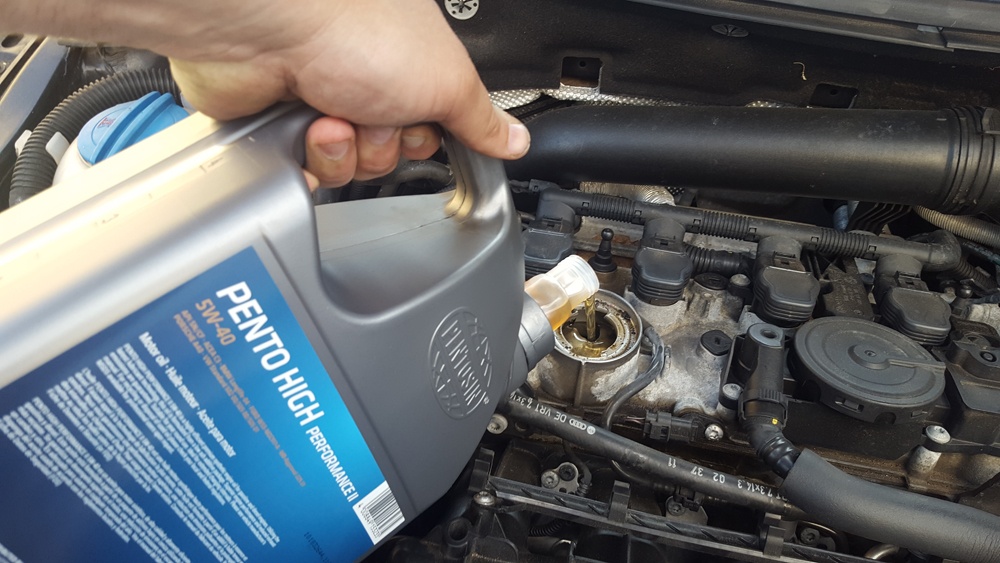
For this application I refiled the engine with 4.5 liters and then lowered the car back down to the ground. I then started the car and let it run for a few minutes. At that point I checked the engine oil level. I was about .5 liters below full which is where I wanted to be. I then used the last .5 liters of oil and filled the engine to max capacity. The reason I do not pour all 5 liters in is because I do not want to overfill the engine on the initial fill. I'd rather be under and then add what is needed later.
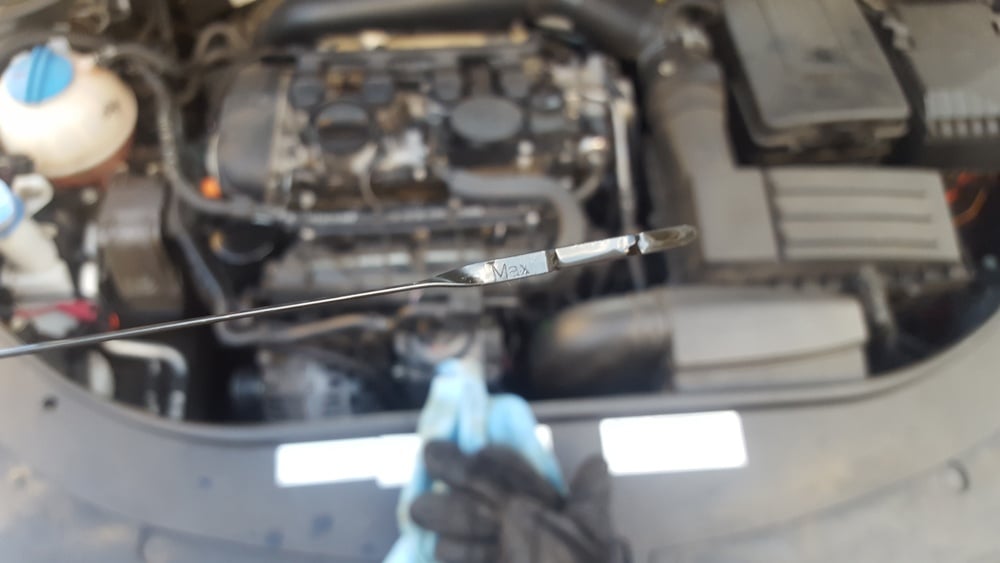
Step 6: Reinstall Everything On Top Of The Engine
Make sure the hose is routed properly across the top of the intake manifold. Check for leaks by the oil filter and below the car.
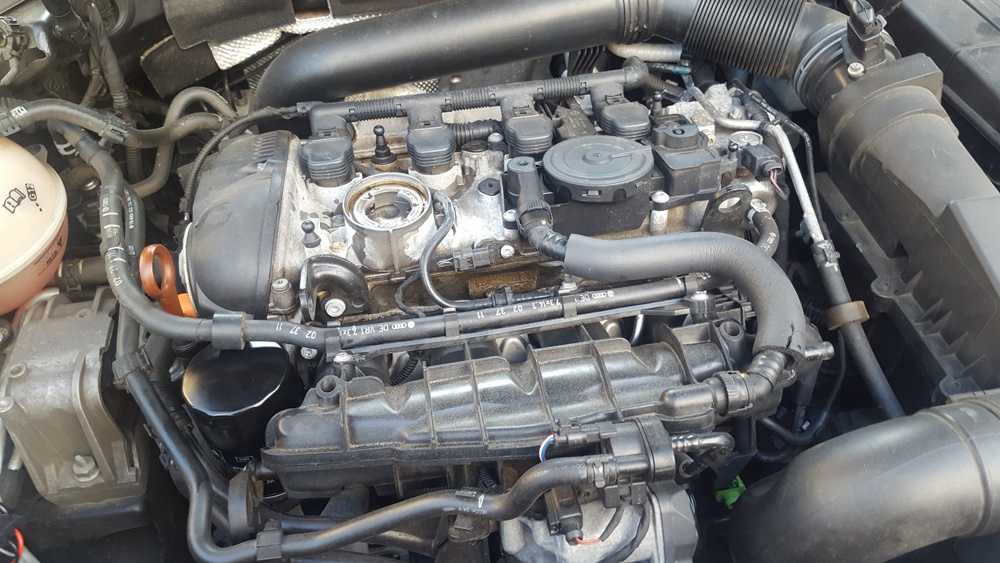
Step 7: Reinstall The Engine Cover
Reset the service interval reminder. You are all set for another 5K miles. Congratulate yourself on a job well done.
